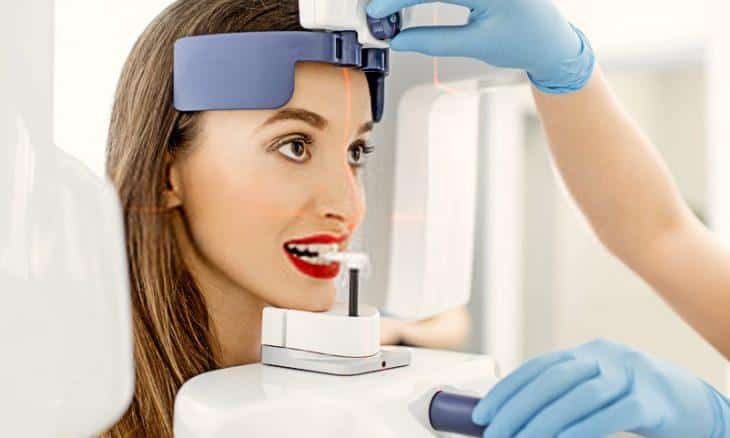
Contents
How to find the best dental x-ray machine for your patients?
Maintaining good dental health is paramount in having excellent overall health. Following a healthy diet devoid of sugary drinks and highly processed food will help prevent damage to your teeth. You will also need to maintain oral hygiene and follow a good oral routine to avoid cavities and plaque from forming in your mouth.
Brushing your teeth at least twice in a day and flossing is mandatory to keep your teeth shiny and bright. Despite all the care you may take to protect your teeth, you may contract problems in your oral health due to the effects of the fast modern lifestyle. You must visit a professional dentist as soon as you notice any issues with the health of your teeth as the problem can get worse if you do not get proper medical treatment.
Although excessive exposure to x-ray radiation can be harmful, x-rays for dental purposes use a fairly low level of radiation. The dentist weighs up the benefits of an x-ray to their health cost to decide on whether to prescribe an x-ray to their patient or not. There are several variations of dental x-ray machines usable by dentists for treating patients. This article will help you in finding the best dental x-ray machine for your patients.
Read Also: Dental Health: 5 Secrets You Need To Know To Keep Your Teeth White
How To Find The Best Dental X-Ray Machine For Your Patients?
Intraoral X-rays and Extraoral x-rays are the different variations in dental x-rays.
Intraoral X-rays
This x-ray is the most prevalent dental x-ray that a dentist uses for diagnosing their patient and the positioning of the x-ray film is inside the mouth. It provides an image of the teeth, roots, and the surrounding jawbones in detail. Due to the higher detail in this type of x-rays, they are useful for analyzing the well being of individual teeth and the growth of teeth and jawbone.
1. Bitewing X-rays
Bitewing x-rays are the most popular dental x-rays that provide a complete view of a part of your teeth with the teeth line on both the upper and lower jaws. The depth of vision of the bitewing x-ray starts from the crown of the teeth up till the supporting bone. Bitewing x-rays can aid in detecting decays between adjacent teeth and changes in the bone density due to gum disease.
The bitewing x-rays are also helpful in finding out if the fit of a dental crown is perfect and the bridge restoration is proper. It is also useful in detecting signs of wear in dental fillings on your teeth. The patient needs to put a pad between their teeth on which the x-ray image appears and it also shows the alignment in which the teeth of the upper and lower jaws meet.
2. Occlusal X-rays
The occlusal x-rays provide the image of either the floor of the mouth or the roof of the mouth. The result is useful for analyzing the complete skeletal anatomy of the patient including the full set of teeth and the jaw. The size of the film for this x-ray is around three times larger than the ones for bitewing x-rays, the size of which is approximately 1 square inch.
This type of x-ray has most applications for pediatric dentists as it can detect the growth of jawbone and formation of teeth. Occlusal x-rays can provide the images of teeth that are still growing and not coming out of the gums.
3. Periapical X-rays
Periapical x-rays grant the opportunity to focus on a single tooth and it provides the image of the tooth. The image result is from the crown to the root and the jawbone where the connection to the tooth exists.
Dentists may recommend taking a periapical x-ray if a patient is complaining of pain to determine if they need to have root canal therapy. This type of x-ray also finds application in determining the progress of endodontic treatments by the endodontists.
Extraoral X-rays
Extraoral x-rays also provide the image of teeth, however, the primary focus is on the jaws and skull bones. The level of detail is not the same as for intraoral x-rays and hence they are not useful for checking the cavities on individual teeth. Extraoral x-rays are useful for finding an impact on teeth development of jaws to teeth.
1. Panoramic X-rays
Panoramic x-rays are a unique type of extraoral x-ray that provides a panoramic view of the entire mouth along with the full set of teeth. This x-ray uses a tiny dosage of ionizing radiation to capture the image of the entire mouth in the film. The machine that takes the panoramic x-ray moves from side to side in an arc motion while the patient lies down.
Panoramic x-rays provide the image of both sets of teeth as well as the roots and jawbone allowing the dentist to determine the impact on teeth, the position of growing teeth, and detecting tumors.
2. Sialography
Sialography involves the use of a dye to get the visualization of the salivary glands and sialography helps to diagnose issues with your salivary glands. The dye gives results in x-rays as it is a radio-opaque contrasting agent that absorbs x-ray radiation.
3. Computed Tomography
This type of x-ray popularly known as CT scan provides a three-dimensional image of the body. CT scans aids in finding tumors, fractures, and determining the bone position for dental implants and surgical procedures.
The Bottom Line
A dental professional commits to provide the best possible medical care to their patients. Consulting with a dentist every few months for a thorough oral checkup will grant you a chance to detect any oral health issues early and get adequate treatment. The dentist can analyze and diagnose many diseases and problems through a thorough visual examination.
However, sometimes they may need the aid of an x-ray for observing the parts of your mouth that are not visible from outer view. Getting an x-ray requires you to wear a heavy apron and withstand the radiations of the x-ray which may be uncomfortable. Although it may not be your favorite part of visiting the dentist, it is essential for the dentist in making the correct diagnosis for your treatment.
Dental x-ray machine allows the dentist to observe your entire teeth line, the roots of your teeth, and the adjacent jawbone composition. X-rays are a form of radiative energy that can pass through solid objects and denser solids such as teeth and bones absorb the radiation which shows up as lighter areas in the x-ray result.




